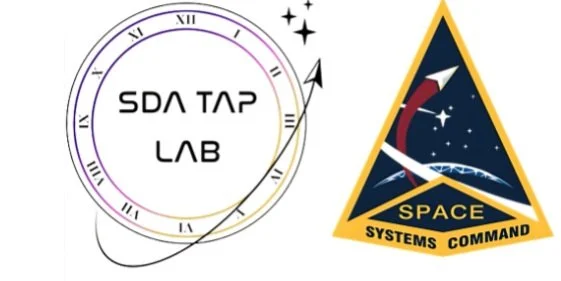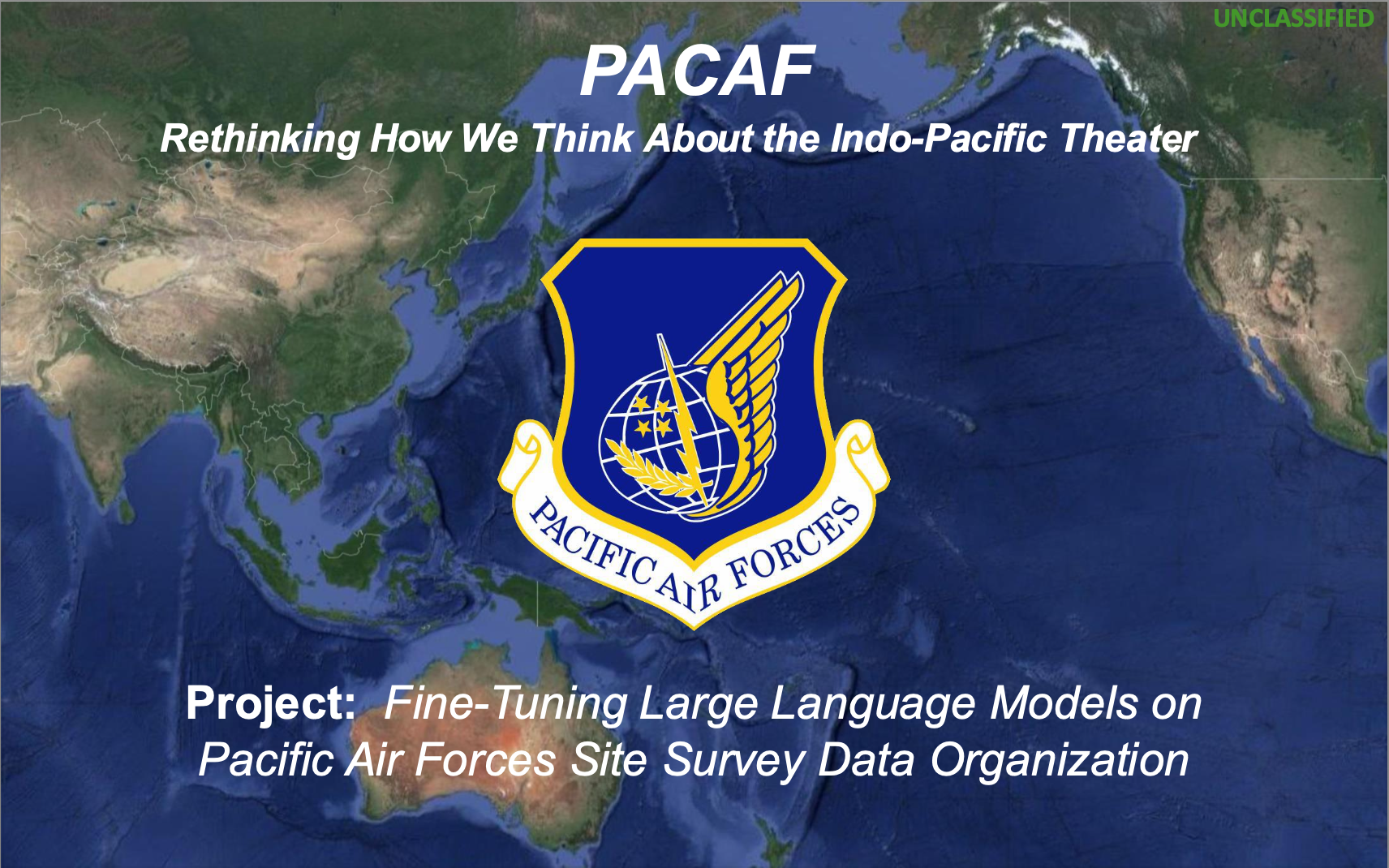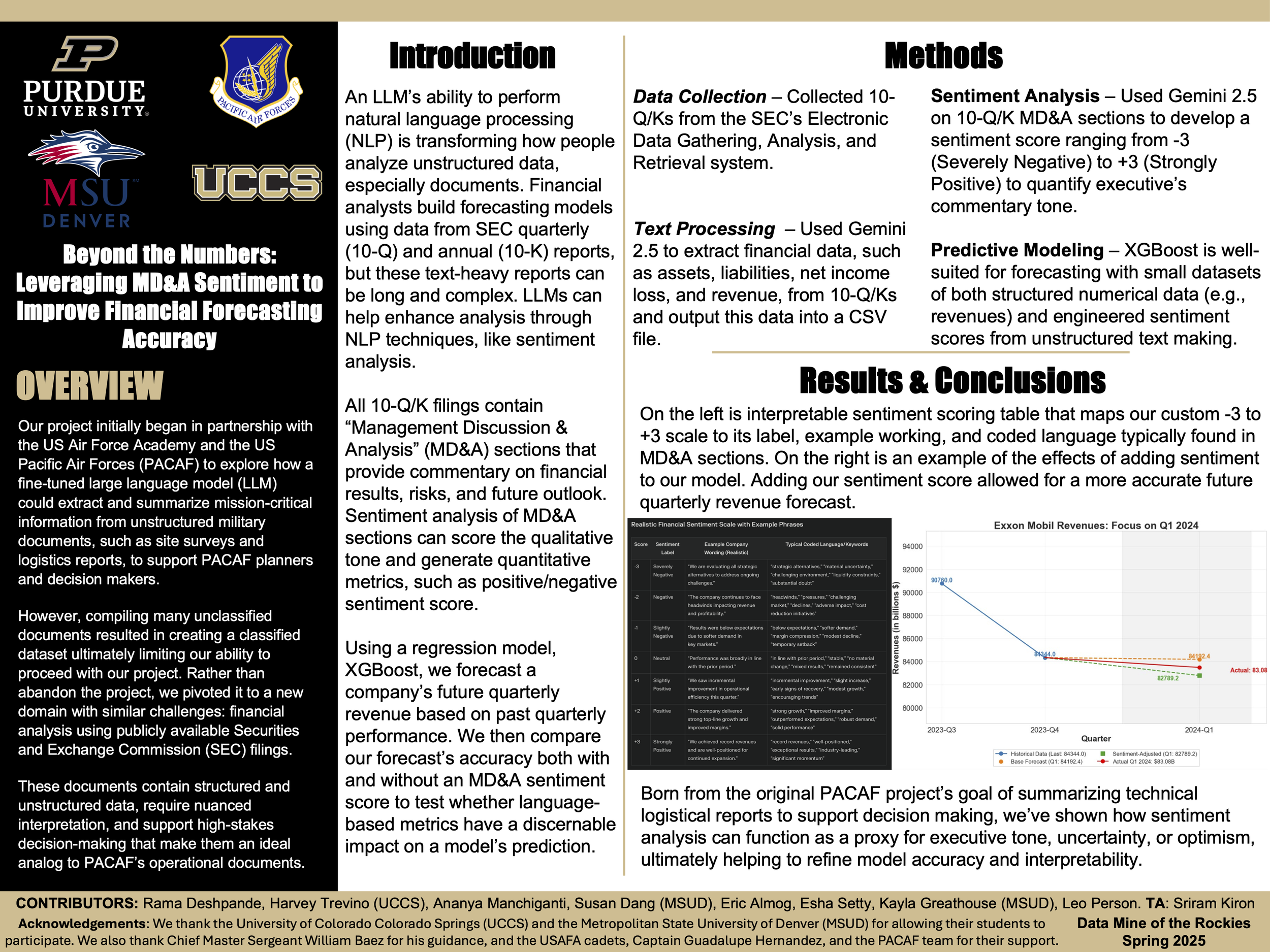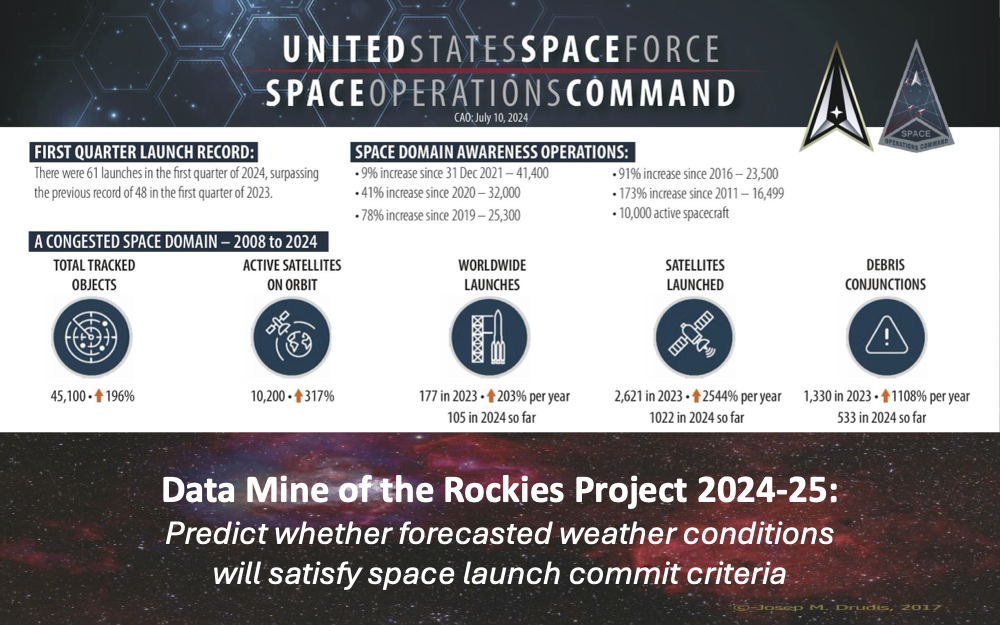FALL 2024
SPRING 2025
PROJECTS
FALL 2024
SPRING 2025
PROJECTS
MEET OUR
PROJECT
PARTNERS
We’re proud to have collaborated with these incredible Project Partners for the 2024–2025 academic year. Their support and real-world challenges make it possible for DMR students to learn by doing, solve meaningful problems, and build the skills and confidence needed to become tomorrow’s data science leaders.
MEET OUR
PROJECT
PARTNERS
We’re proud to have collaborated with these incredible Project Partners for the 2024–2025 academic year. Their support and real-world challenges make it possible for DMR students to learn by doing, solve meaningful problems, and build the skills and confidence needed to become tomorrow’s data science leaders.
L3 Harris: Satellite Cybersecurity Detection
L3Harris: Satellite Cyberattack Detection In this project, students worked with L3Harris to develop machine learning models that analyze satellite network data and detect potential cyberattacks before they cause serious disruptions. By simulating satellite communications and using advanced tools like packet analysis and time-series algorithms, the team explored how to safeguard critical infrastructure in space. This hands-on project gave students the opportunity to tackle real cybersecurity challenges at the frontier of satellite technology.
L3 Harris: Satellite Cybersecurity Detection
L3Harris: Satellite Cyberattack Detection In this project, students worked with L3Harris to develop machine learning models that analyze satellite network data and detect potential cyberattacks before they cause serious disruptions. By simulating satellite communications and using advanced tools like packet analysis and time-series algorithms, the team explored how to safeguard critical infrastructure in space. This hands-on project gave students the opportunity to tackle real cybersecurity challenges at the frontier of satellite technology.
Lockheed Martin: Anomaly Detection in System Logs Using Generative Adversarial Networks (GANs)
Lockheed Martin: Anomaly Detection in System Logs Using GANs In this project, students partnered with Lockheed Martin to explore how machine learning can detect anomalies in massive system log data. By comparing Generative Adversarial Networks (GANs) with LSTM-based autoencoders, the team investigated new ways to identify hidden cyber threats and unusual behavior in complex networks. This hands-on work advanced real-world cybersecurity strategies and gave students a chance to work at the cutting edge of AI and defense technology.
Lockheed Martin: Anomaly Detection in System Logs Using Generative Adversarial Networks (GANs)
Lockheed Martin: Anomaly Detection in System Logs Using GANs In this project, students partnered with Lockheed Martin to explore how machine learning can detect anomalies in massive system log data. By comparing Generative Adversarial Networks (GANs) with LSTM-based autoencoders, the team investigated new ways to identify hidden cyber threats and unusual behavior in complex networks. This hands-on work advanced real-world cybersecurity strategies and gave students a chance to work at the cutting edge of AI and defense technology.
NSIC: Nexus Project
NSIC: Nexus Project This project, in partnership with the National Space Intelligence Center (NSIC), used unsupervised machine learning to identify patterns in U.S. weather and satellite optics data. Students tested multiple clustering techniques, including K-Means and DBSCAN, to determine how key atmospheric variables change across regions and time. Their findings support future applications in national security assessments and environmental monitoring.
NSIC: Nexus Project
NSIC: Nexus Project This project, in partnership with the National Space Intelligence Center (NSIC), used unsupervised machine learning to identify patterns in U.S. weather and satellite optics data. Students tested multiple clustering techniques, including K-Means and DBSCAN, to determine how key atmospheric variables change across regions and time. Their findings support future applications in national security assessments and environmental monitoring.
PACAF: Leveraging the MD&A Sentiment to Improve Financial Forecasting Accuracy
Beyond the Numbers: Leveraging MD&A Sentiment to Improve Financial Forecasting Accuracy Originally started with the U.S. Pacific Air Forces (PACAF), this project pivoted to explore financial forecasting using SEC filings when the initial dataset became classified. Students used large language models and sentiment analysis on company filings (10-Q/K reports) to quantify executive tone and enhance revenue predictions. By combining text analysis with predictive modeling, the team demonstrated how language-based metrics can improve financial forecasting accuracy and support smarter decision-making.
PACAF: Leveraging the MD&A Sentiment to Improve Financial Forecasting Accuracy
PACAF: Leveraging MD&A Sentiment to Improve Financial Forecasting Accuracy Originally started with the U.S. Pacific Air Forces (PACAF), this project pivoted to explore financial forecasting using SEC filings when the initial dataset became classified. Students used large language models and sentiment analysis on company filings (10-Q/K reports) to quantify executive tone and enhance revenue predictions. By combining text analysis with predictive modeling, the team demonstrated how language-based metrics can improve financial forecasting accuracy and support smarter decision-making.
SDA TAP Lab: Ground Infrastructure Security
SDA TAP Lab: Ground Infrastructure Security In this project, students collaborated with the Space Domain Awareness Tools, Applications and Processing Lab (SDA TAP Lab) to identify and analyze vulnerabilities in U.S. Space Force ground infrastructure, focusing on optical telescope systems. Using advanced tools like web scraping, semantic search models, and threat matrix analysis, the team developed a scalable application to assess and prioritize cybersecurity risks. This work helps protect critical space assets and prepares students to tackle real-world challenges in national security and cyber defense.
SDA TAP Lab: Ground Infrastructure Security
SDA TAP Lab: Ground Infrastructure Security In this project, students collaborated with the Space Domain Awareness Tools, Applications and Processing Lab (SDA TAP Lab) to identify and analyze vulnerabilities in U.S. Space Force ground infrastructure, focusing on optical telescope systems. Using advanced tools like web scraping, semantic search models, and threat matrix analysis, the team developed a scalable application to assess and prioritize cybersecurity risks. This work helps protect critical space assets and prepares students to tackle real-world challenges in national security and cyber defense.
Space ISAC: Multi Orbit Interference and On Orbit Attacks
Space ISAC: Multi Orbit Interface and On Orbit Attacks Students working with Space Information Sharing and Analysis Center (Space ISAC) tackled a global challenge: satellite interference. By scraping and classifying massive amounts of open-source data using AI and natural language processing, they built an interactive heatmap to visualize interference events. This tool helps analysts quickly determine whether interference is benign or malicious—improving security awareness, accelerating response times, and advancing decision-making for space operations.
Space ISAC: Space Weather
Space ISAC: Space Weather Partnering with Space ISAC, this project focused on forecasting satellite anomalies triggered by space weather events. By analyzing decades of historical solar activity and satellite incident data, students built a logistic regression model to predict when anomalies might occur—helping operators avoid disruptions and reduce costs. This work lays the foundation for smarter satellite risk management and more proactive space operations.
Space ISAC: Multi Orbit Interference and On Orbit Attacks
Space ISAC: Multi Orbit Interface and On Orbit Attacks Students working with Space Information Sharing and Analysis Center (Space ISAC) tackled a global challenge: satellite interference. By scraping and classifying massive amounts of open-source data using AI and natural language processing, they built an interactive heatmap to visualize interference events. This tool helps analysts quickly determine whether interference is benign or malicious—improving security awareness, accelerating response times, and advancing decision-making for space operations.
Space ISAC: Space Weather
Space ISAC: Space Weather Partnering with Space ISAC, this project focused on forecasting satellite anomalies triggered by space weather events. By analyzing decades of historical solar activity and satellite incident data, students built a logistic regression model to predict when anomalies might occur—helping operators avoid disruptions and reduce costs. This work lays the foundation for smarter satellite risk management and more proactive space operations.
SpOC: Launch Commit Criteria
SpOC: Launch Commit Criteria This DMR project with the U.S. Space Force’s Space Operations Command explores how machine learning models can predict whether a space launch will be a “go” or “no-go” based on weather forecasts. Students worked with real data from Cape Canaveral and Vandenberg to train deep learning and boosting models, helping defense operators better assess launch feasibility—both for U.S. missions and potential adversaries.
SpOC: Launch Commit Criteria
SpOC: Launch Commit Criteria This DMR project with the U.S. Space Force’s Space Operations Command explores how machine learning models can predict whether a space launch will be a “go” or “no-go” based on weather forecasts. Students worked with real data from Cape Canaveral and Vandenberg to train deep learning and boosting models, helping defense operators better assess launch feasibility—both for U.S. missions and potential adversaries.
























